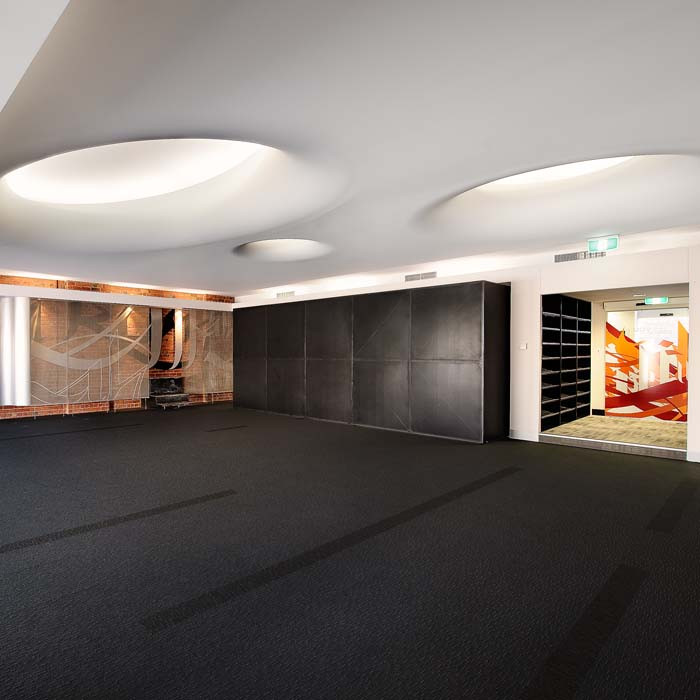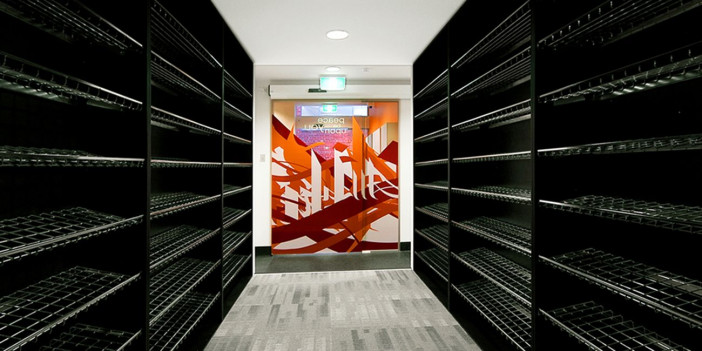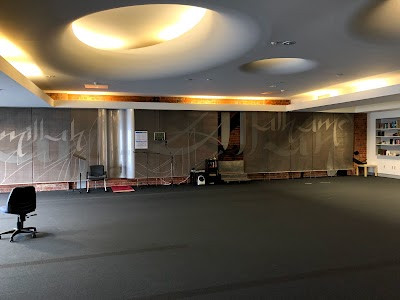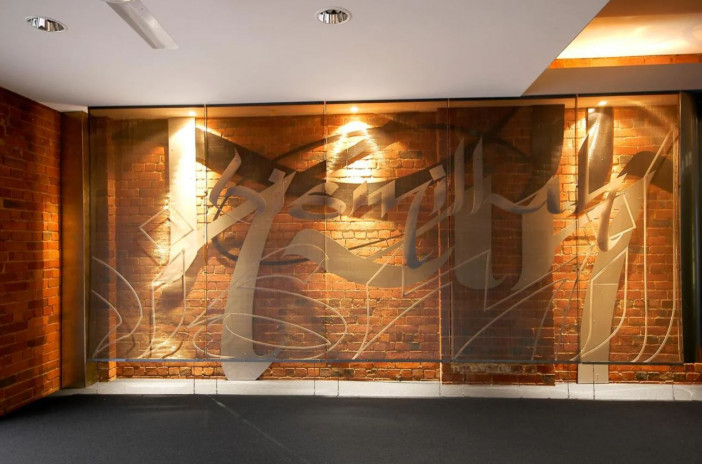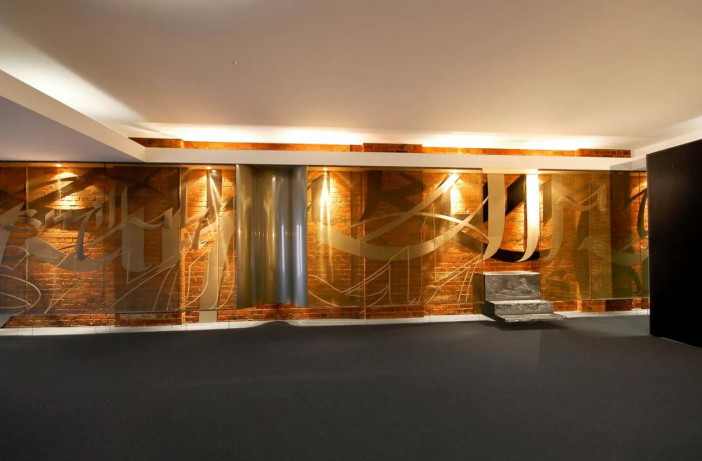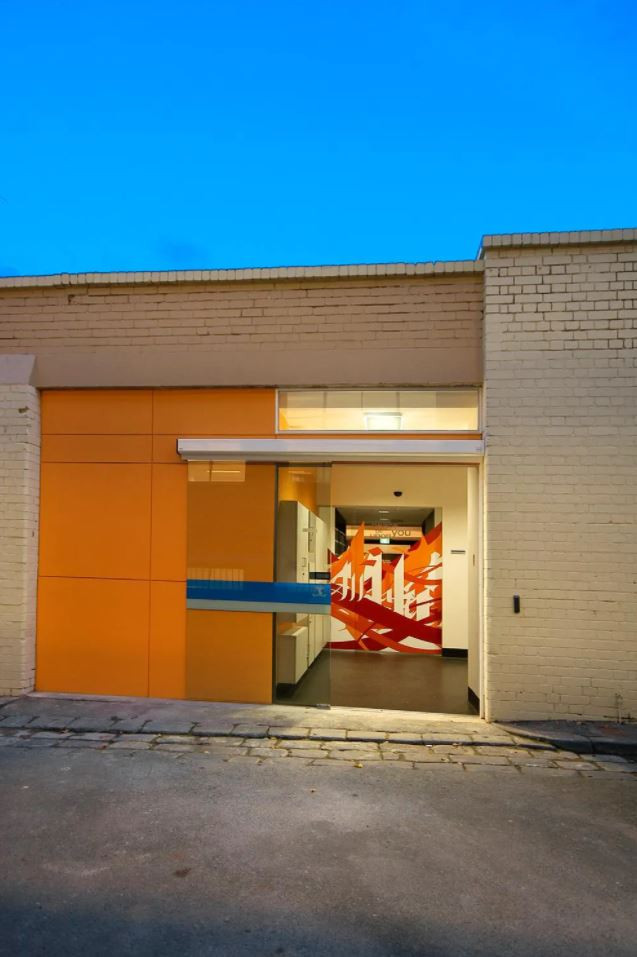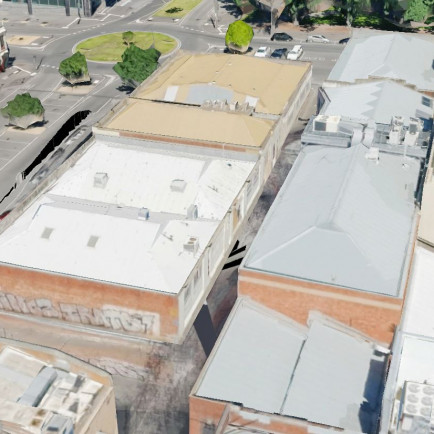University of Melbourne Islamic Prayer Facility
History
This contemporary Musalla was built in 2009.
Urban and Architectural
|
The
new state-of-the-art Islamic Prayer Facility or Musalla at the University of
Melbourne is designed to accommodate 300 praying people. The discreet entry
from Little Pelham St gives way to he brilliantly coloured welcome of “peace
be upon you ”adorning the entry door before the unfolding of the series of
spaces beyond. Peter Gould’s artwork, winner of closed competition organized
for the project in 2009, was executed in its original design. The prayer
space is contrasting in its sobriety and tranquillity. Softly lit ceiling
domes, raw colours and materials and pure simplicity of space prepare one to
bring to rest whirring thoughts of the mundane world. Once in the main prayer
hall the focus is drawn to the Qiblah wall – with its serendipitous direction
towards Mecca, the direction of prayer. The layers of artwork viewed through
a steel wire mesh screen and under the subtle play of light and shadow precede
the original face brick. |
Description
The Musalla is located on the edge of the University of Melbourne campus, in the city centre. It is next to Melbourne Business School and it Law School. According to Rahmat Bayudi of Desypher Architecture, Planning, & Urban Design,
the musalla was commissioned by the University of Melbourne to include a prayer space for 300, with dedicated ablution areas for men and women, a facility for the disabled, and a small resource centre.
The main prayer hall incorporates a modern take on traditional inscription bands, with a transliterated calligraphic screen displayed behind a screen of steel mesh. The ceiling domes accommodate sensor-operated extraction fans for air exchange; the areas for men and women are divided by a flexible partition, and the lighting system adjusts to balance with the level of natural light from the south-facing windows.
Details
Location
Parkville VIC 3010, Melbourne, Victoria
Worshippers
300
Owners
University of Melbourne / Muslim Student Association
Architect Name
Year of Build
2009
Area
700 m²
Drawings
Map
History
This contemporary Musalla was built in 2009.
Urban and Architectural
|
The
new state-of-the-art Islamic Prayer Facility or Musalla at the University of
Melbourne is designed to accommodate 300 praying people. The discreet entry
from Little Pelham St gives way to he brilliantly coloured welcome of “peace
be upon you ”adorning the entry door before the unfolding of the series of
spaces beyond. Peter Gould’s artwork, winner of closed competition organized
for the project in 2009, was executed in its original design. The prayer
space is contrasting in its sobriety and tranquillity. Softly lit ceiling
domes, raw colours and materials and pure simplicity of space prepare one to
bring to rest whirring thoughts of the mundane world. Once in the main prayer
hall the focus is drawn to the Qiblah wall – with its serendipitous direction
towards Mecca, the direction of prayer. The layers of artwork viewed through
a steel wire mesh screen and under the subtle play of light and shadow precede
the original face brick. |
Description
The Musalla is located on the edge of the University of Melbourne campus, in the city centre. It is next to Melbourne Business School and it Law School. According to Rahmat Bayudi of Desypher Architecture, Planning, & Urban Design,
the musalla was commissioned by the University of Melbourne to include a prayer space for 300, with dedicated ablution areas for men and women, a facility for the disabled, and a small resource centre.
The main prayer hall incorporates a modern take on traditional inscription bands, with a transliterated calligraphic screen displayed behind a screen of steel mesh. The ceiling domes accommodate sensor-operated extraction fans for air exchange; the areas for men and women are divided by a flexible partition, and the lighting system adjusts to balance with the level of natural light from the south-facing windows.


